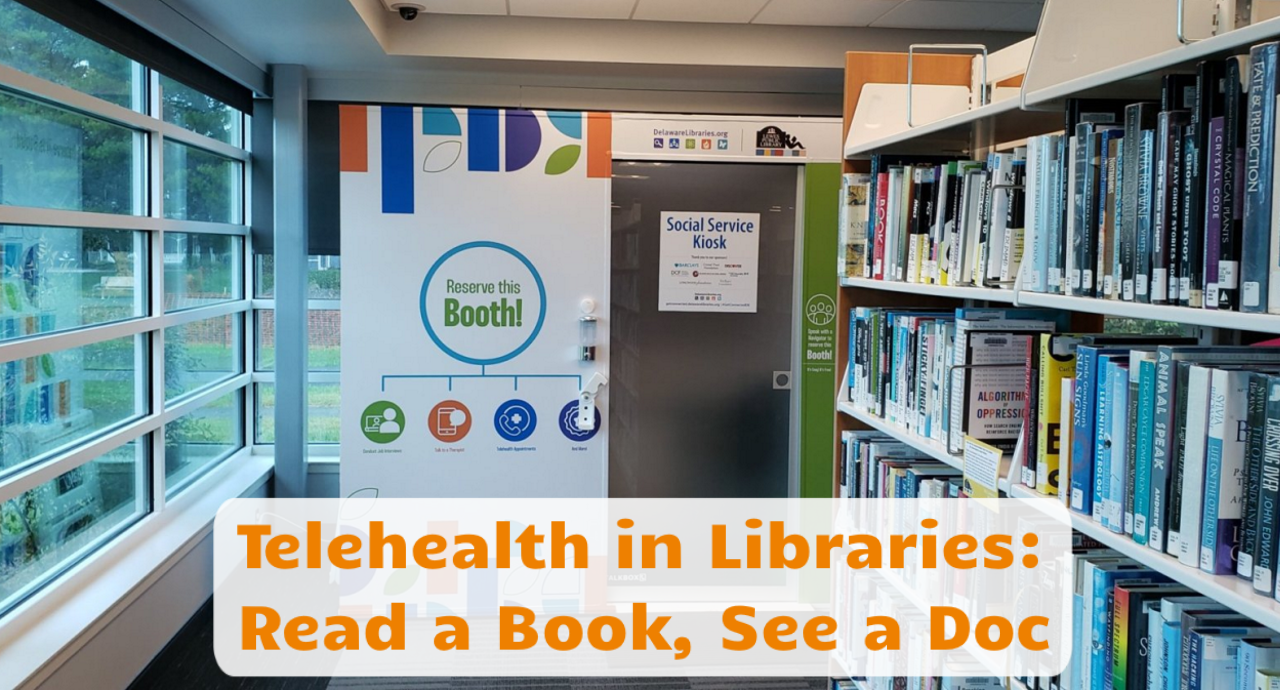For quite some time, public libraries in the US have been considered one of the last public spaces where virtually anyone can gather in a safe environment. In urban as well as rural areas, “libraries don’t just provide free access to books and other cultural materials. They also offer things like companionship for older adults, de facto child care for busy parents, language instruction for immigrants and welcoming public spaces for the poor, the homeless and young people.” [see New York Times OpEd, 2018].
It thus seems almost a natural evolution that libraries increasingly offer information and services related to health and wellbeing. Whether it is general guidance to library patrons on how to find good health information or through the Consumer Health Information Specialization (CHIS) training and certification that was launched in 2019 — libraries are catering to the increasing desire by the modern healthcare consumer to make informed decisions pertaining to their health.
With the Covid-19 health crisis opening many people’s eyes to the possibilities of accessing care through telehealth, coupled with a lack of digital literacy and lack of connectivity or access to advanced technology, it seems quite a natural fit, for libraries to explore the use of telehealth services and of “tele social services” to offer to their patrons.
The Benefits of Library Telehealth
Since 2021, our team has been working on a comprehensive program to improve access to care through telehealth in a large rural region in Washington state. Whereas many telehealth programs are focused on a single care provider, this community-focused initiative aims at bringing multiple regional partners together to offer multiple access points to care through telehealth.
In addition to increasing digital literacy through digital navigators and offering alternate access points through employers and schools, the program also encompasses the use of telehealth in libraries.
The benefits to telehealth access in libraries are manifold. For the libraries, telehealth offers an expansion and diversification of service offerings that expands on the libraries’ purpose as a safe public space. It brings in new patrons and expands on the multi-faceted mission of libraries. For the community, access to care services through the library can address unique community needs such as depression or opioid use.
Using libraries also leverages a ubiquitous infrastructure, as “close to 100% of the US population lives within 5 miles of at least one library […] and 73% of the population live within 1 mile.” [see Center for Urban Research at CUNY].
With libraries being public spaces and “judgment free zones”, the barriers presented by traditional access points to care or health information are removed or greatly diminished.
What Can Library Telehealth Offer?
Across the spectrum of telehealth services, the most common use cases for telehealth include access to behavioral health, primary care, and specialty care through pre-scheduled appointments. This could include a follow up visit with a primary care physician (PCP) to review test results, counseling sessions, or a regular check-up with your specialist at an academic medical center 100 miles away.
In its simplest form, the telehealth service offers “visit only” live audio and video in a private environment with good connectivity. At the next level the visit could also include a limited amount of “self-service” exam capabilities, including a thermometer, a blood pressure cuff, a scale, or a pulse oximeter to allow patients to capture some vital signs under the guidance of a remote nurse.
Depending on the capabilities of the clinical partner, access to ad-hoc, urgent-care-like services could be offered, though most likely only as a screening and triage tool to determine the best course of action in an acute situation, e.g., whether to go to an urgent care clinic, to the emergency room, or to see their PCP if symptoms don’t subside by the next day.



Library Telehealth Programs
Access to healthcare services through telehealth (“care at a distance”) is still in its very infancy across the US. We only know of a handful of libraries that have established an infrastructure and even fewer have a steady stream of telehealth appointments.
One of the most recent initiatives that we are aware of is the Delaware Library System’s Get Connected program that was launched in 2021. Also in the news in 2020 was a library north of Dallas, TX, that launched a telehealth service in response to Covid. Another initiative that launched in 2022 is the Health Connect program in Maine.
There even is a mailing list of interested librarians that is maintained by Nick Martin, the project manager for the Delaware project.
Overall, however, it appears that telehealth at libraries is still a largely untapped potential and we envision that through our work in Washington state we can add to the body of knowledge around how to best design and launch a successful library telehealth program.
Beyond Telehealth to TeleServices
While access to healthcare at the library definitely has its merits, once the infrastructure of a private space to conduct video visits is established, the possibilities of what types of “teleservices” patrons could access is (virtually) endless.
Possibilities include preparing for a job search, getting signed up for health insurance, receiving assistance with social programs, communicating with the social security administration, or participating in TeleCourt services.
In addition to telehealth and teleservices, some libraries are also offering loaner technology, such as Chromebooks or internet hotspots. Other libraries are providing digital literacy training on preparing for a telehealth visit using their own technology.
The expansion beyond telehealth is also well within the scope of population health that aims to address social determinants of health and to increase health equity, which these services can address in addition to the medical and behavioral health needs.
Technology and Challenges
To provision access to telehealth and teleservice, three technology models have emerged: a stand-alone booth (such as the one pictured in this article’s main image), a designated room, or an enclosable setup in a multi-purpose room. With those configurations technology and installation cost can range from $1,500 to $15,000, depending on the chosen solution and the library’s existing infrastructure.
The main challenges, however, do not lie in the technology but rather in the workflows, the staffing, change management, and in creating awareness.
For telehealth to work well, the experience must be carefully designed to satisfy clinicians, patients, and the library staff. Clinicians and library staff must be well-informed about the availability in order to promote its use.
A successful launch of telehealth services in libraries thus requires a close collaboration between the leadership and staff of the individual library as well as the clinicians, nurses, and schedulers at the clinical partner, in order to make telehealth a resounding success.
So maybe the next time you go to the library to read a book, bring your health insurance card and you may also be able to see a doc!








To receive articles like these in your Inbox every week, you can subscribe to Christian’s Telehealth Tuesday Newsletter.
Christian Milaster and his team optimize Telehealth Services for health systems and physician practices. Christian is the Founder and President of Ingenium Digital Health Advisors where he and his expert consortium partner with healthcare leaders to enable the delivery of extraordinary care.
Contact Christian by phone or text at 657-464-3648, via email, or video chat.






